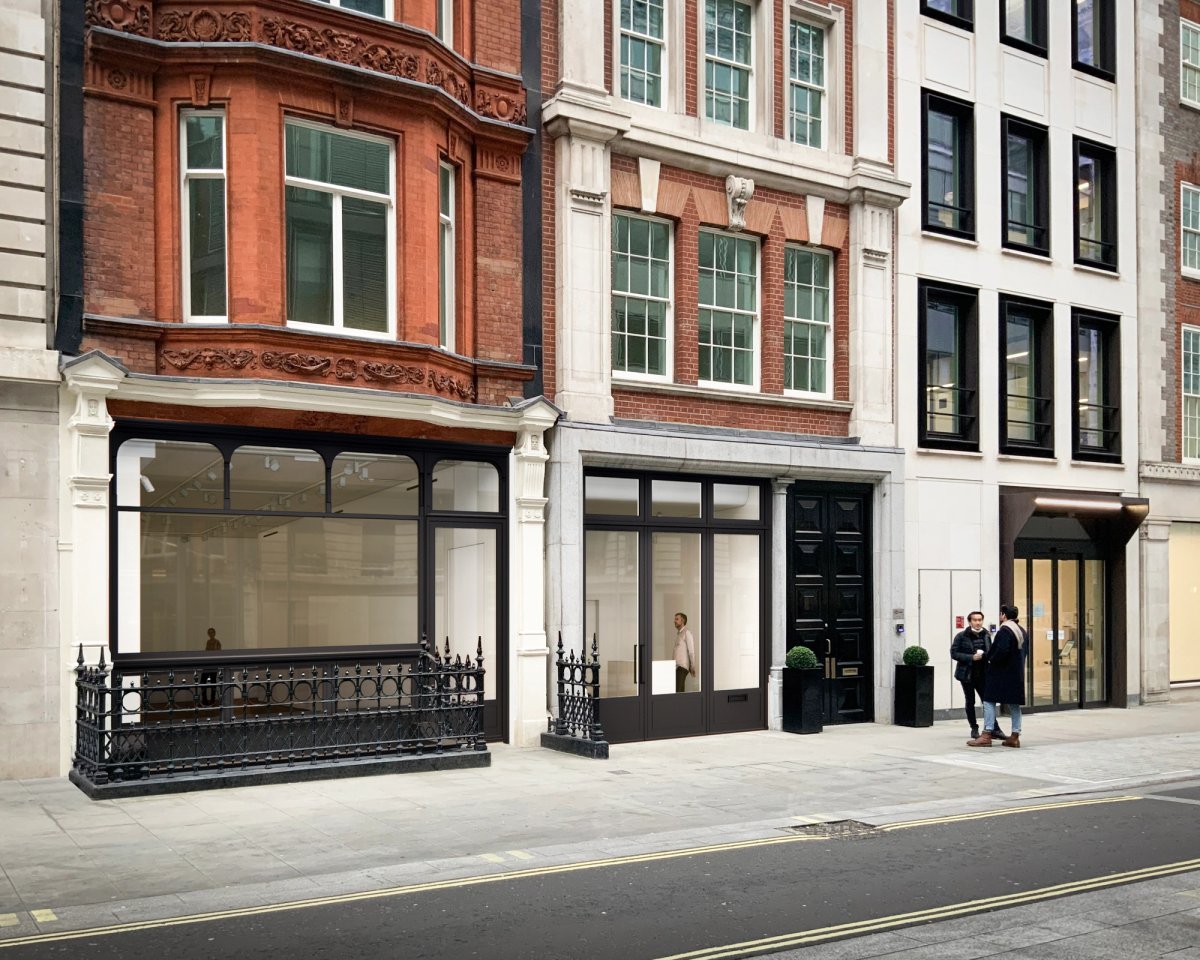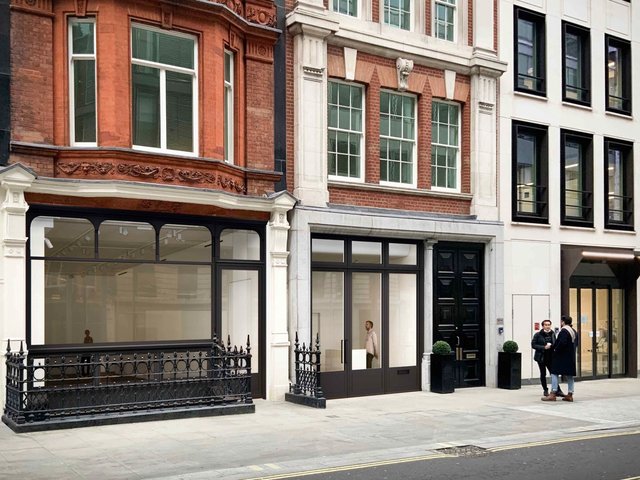Frieze is swimming against the tide. While everyone else in the art world has spent the past two years getting to grips with a new, digital way of doing business, the magazine-publisher-turned-art-fair-organiser has been planning its first permanent physical space.
No.9 Cork Street opened its doors today. Based in two London townhouses converted by architects Matheson Whiteley, it has three galleries that can be rented for exhibitions of around four weeks at a time. Each gallery comes with its own viewing room and there is an event space in the basement.
“Although our digital offering has been really successful, there has been a longing for people to see art in real life,” says Frieze’s artistic director, Eva Langret. “Nothing replaces that experience.” Conversations around the project started in 2019 but were galvanised by Covid-19. “During the pandemic we saw that this model of pop-up gallery spaces was happening naturally among the gallery community. So we realised it’s something we needed to look at more seriously,” she says.
The choice of location is important. Cork Street, situated in Mayfair and tucked right behind the Royal Academy of Arts, is synonymous with London’s commercial art world. But the street has been in decline for decades, with many galleries moving to cheaper and more vibrant areas such as Shoreditch or Bermondsey, or just dispersing around Mayfair and St James’s in search of larger spaces. In 2012, a Save Cork Street campaign sprang up.
Much of the street is now owned by the developers The Pollen Estate, which renovated No.9 as well as creating a vast new gallery complex opposite, designed by the architects Rogers Stirk Harbour + Partners. Big-name galleries have started to move in, including Goodman Gallery in 2019 and the Lisson Gallery in 2020. Saatchi Yates, run by the collector Charles Saatchi’s daughter Phoebe Saatchi Yates, moved into the enormous 10,000 sq. ft space next door in 2020.
For Langret, coming to Cork Street was a no-brainer. “I think it’s important when you offer this kind of project to have a landmark location. This is about international galleries coming to London for a short period of time, so they need to have an address that’s recognisable, and you can get to, and is embedded within the artistic community. And Cork Street has all of this already.”
With fees starting at £38,000 for the smallest space in the off-season, and rising to £55,500, the project could create a substantial new revenue stream for Frieze. Applicants are expected to be commercial galleries with a regular exhibition programme, and participants in recent Frieze art fairs are prioritised. Lower rates are offered to younger galleries, those who focus on emerging artists and non-profits.
One key benefit is to offer non-UK-based galleries a temporary presence in the heart of London that is more substantial than can be offered at Frieze London. “When we’re at the fair it’s a very short, very intense moment,” Langret says. “No.9 Cork Street is about expanding those relationships into the longer term, spending more time in London, spending more time with curators in London and the rest of Europe.”
What’s on at No.9 Cork Street
James Cohan gallery
The New York gallery presents a solo show by Christopher Myers, his first in the UK. I Dare Not Appear brings together appliqué textile works with historical letters written by Sarah Forbes Bonetta, an enslaved girl bequeathed to a Royal Navy captain.
Commonwealth and Council
The Los Angeles gallery has bought work by four artists working in varying media: Danielle Dean, who also be showing at Tate Britain’s Art Now space from January 2022, Nikita Gale, who has an exhibition at London’s Chisenhale Gallery in 2022, P. Staff and EJ Hill.
Proyectos Ultravioleta
Vivian Suter shows her characteristic colourful works on freely hanging canvas, evoking the Guatemalan jungle where she lives. (These were recently shown in the UK at Tate Liverpool and the Camden Arts Centre.) They are joined by collages by her late mother, Elisabeth Wild.
All until 23 October 2021.




